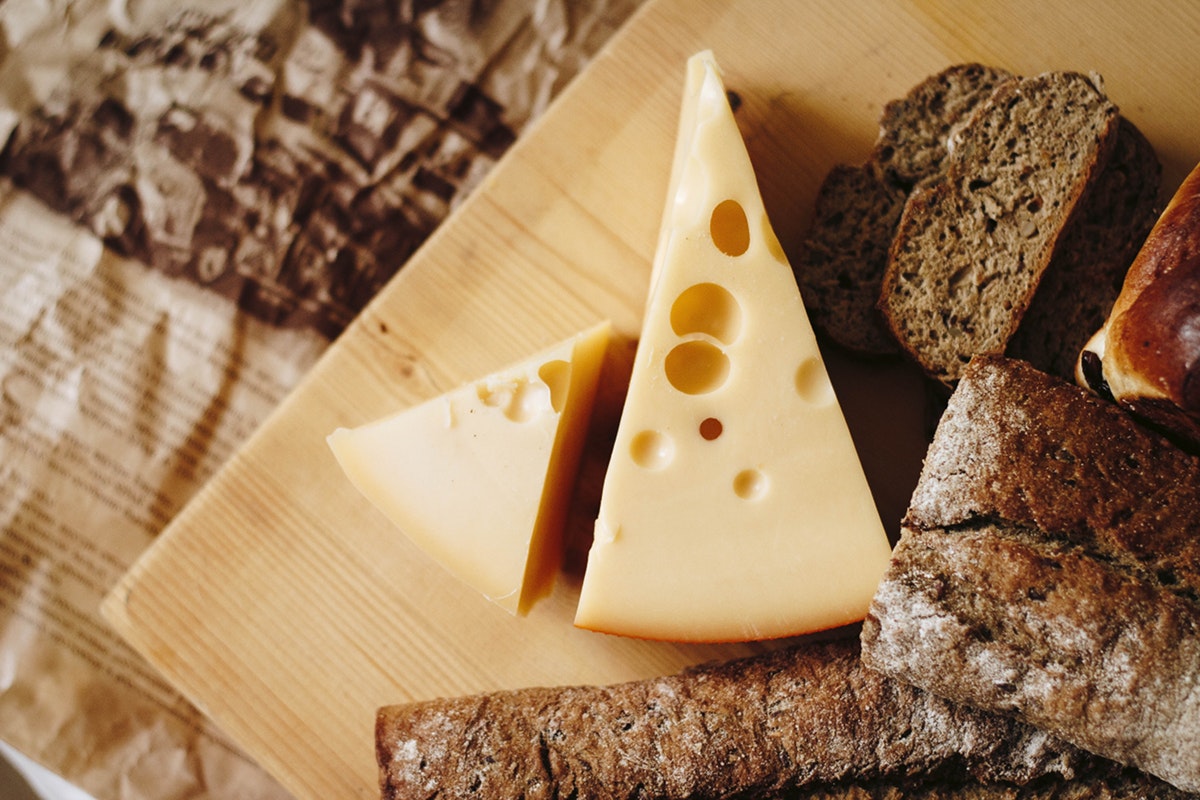The term Swiss cheese might cause some confusion in some places, especially north America where sliced cheese (with holes) marketed under the wiss Cheese’ name is prevalent.
Swiss cheese is typically pale yellow in color, with scattered holes, boasting a somewhat nutty flavor.
Why Does Swiss cheese have holes?
Swiss cheese has holes; this is a very notable fact. And if you ever wondered about these holes as a child, chances are someone told you a story about mice nibbling away at the large wheel of Swiss.
The scientific explanation behind the holes in Swiss cheese has been known for quite a while, in fact.
The Bacteria
Emmentaler (the proper name for Swiss cheese) attributes its appearance and flavor to the activities of bacteria; this is the same bacterium that transforms milk into cheese. It should be noted first that all cheese contains bacteria.
Bacteria are responsible for the production of lactic acids and play a vital role in the development of a final edible product from cheese.
However not all cheese bacteria is alike.
When it comes to the production of Swiss cheese, cow’s milk is combined with the bacteria cultures P.shermani, S.thermophilus and Lactobacillus. In the right conditions, curds are produced, pressed and soaked in brine (inside cheese molds). The molds are then stored at the right temperature until the cheese ripens.
It is at that point that the bacteria begin to operate; while one type of bacteria leads to the production of lactic acid, another (gassy) type of bacteria consumes it. Carbon dioxide is released, forms small air pockets, the result being the holes found in Swiss cheese.
Swiss cheese manufacturers can control the size of the holes by manipulating the acidity as well as variables like temperature and maturing time.
Hay
For more than a hundred years, scientists theorized that the holes in Swiss cheese emerged as a result of carbon dioxide released by the bacteria found in cheese; and this theory has stood the taste of time, until now.
Recent developments suggest that the holes in Swiss cheese could be more accurately attributed to hay.
Farmers have as of late noticed that the holes in their Swiss cheese have been getting smaller, and scientists have imputed this to changes in the manufacturing process, with the barns and bucket methods old known for producing far larger holes in their cheese than today’s processing plants.
Research
Researchers have suggested that this might have something to do with the fact that these old fashioned methods would allow larger hay particulates to infiltrate the cheese, this then producing better results.
This new theory revolves around a process known as heterogeneous nucleation, akin to the way rain drops form around dust particles. When hay particulates are introduced into the cheese, they generate weaknesses in the curd; it is around these weaknesses that the carbon dioxide gas forms, producing Swiss cheese’s famous holes. Larger particulates produce larger holes.
As one researcher, John Jaeggi, put it, it doesn’t actually have to be hay; any other particulates of matter introduced into Swiss cheese can produce similar results; and because of the efficiency of today’s Swiss cheese manufacturing process, which are essentially limiting the number of particulates that can infiltrate cheese, Swiss cheese holes are getting somewhat smaller.
While the ay’ theory isn’t exactly revolutionary, it further expounds upon the bacteria/carbon dioxide idea of old.
